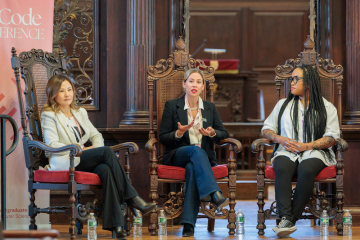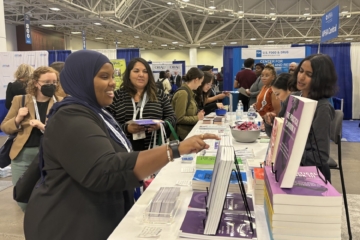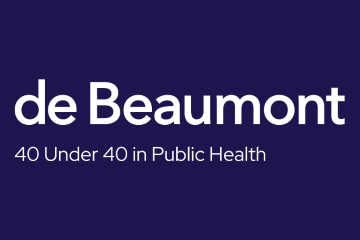At the age of 41 years, I was diagnosed with Type II Diabetes, hypertension, and elevated blood cholesterol. Not exactly the hat-trick to which one aspires.
For years, I was the poster child for the excuses we all have for neglecting our health — I was too busy, too tired, and had too many demands on my time. When I finally heard the diagnoses after ignoring years of warnings, I knew these excuses couldn’t continue.
Today, about six months later, I am fortunate to say that I’ve lost 30 pounds. I visit the gym at least five days a week, I make different choices about the food I eat, and I take medication daily. Not surprisingly, this combination has all of my numbers well within the normal range, if not below.
But, this isn’t a blog about inspirational weight loss or personal conviction. No, this blog is about individual choice and, more importantly, how the individual choices I was able to make are a privilege afforded to me because of my income, education, employment, and neighborhood.
To Make a Choice, You Must Have a Choice
How are the choices I made a privilege? My work hours are flexible enough to allow me to plan my week around my gym time. My employer provides gym membership as an employee benefit, and I can afford the extra monthly charge for childcare while I work out. I have a partner who helps me prepare nutritious meals and manage the daily tasks of family life. The neighborhood where I live has many options where I can purchase healthy food including large grocery stores, farmers markets, and niche markets specializing in organically grown produce. When I can’t cook, I’m not stuck with fast food as my only option. I also have the ability to run safely in a park, take a leisurely stroll with my family, or workout using outdoor gyms in addition to the commercial gyms that dot my neighborhood.
These are the perfect conditions in which to turn over a new leaf and get healthy-but they’re not available to everyone.
Consider an hourly employee at a call center. Her work hours are set and squeezing in a gym visit during the workday would impact her take-home pay. Let’s say she lives in a neighborhood where liquor stores and fast food restaurants clutter the streets. There are no grocery stores, no restaurants serving affordable, quick, healthy meals. Maybe she is a single mother, juggling meal planning and daily chores without the help of a partner at home.
With each new fact about this person’s life, you understand the degree to which her choices are limited.
If I didn’t have the privileges that I do, my choice could have been limited to medication. And if that didn’t work, then my choice after that would be to continue to medicate at higher doses. And if that still didn’t work? Then my next choice would be to move on to more aggressive and expensive treatments.
Of course, this assumes that I have access to care and can afford my medications. Far too many Americans are forced to choose between health care, including medication, and things like food, electricity, or housing.
Welcome to Haddon Avenue
If you need a real life example, take Haddon Avenue. I remember driving this road often when I lived in New Jersey. It starts in Camden and ends in Haddonfield. As you make the drive along Haddon Avenue, the boarded up, burnt out homes are replaced by playgrounds and bustling town squares. The ubiquitous corner stores lined with cigarette ads are replaced by niche grocery stores offering locally grown, organic fruit. Those living at the start of this journey have much different choices about how to improve their health than those at the end.
Haddon Avenue is not unique. Public health researchers have quantified what I observed driving along Haddon Avenue — how differences in wealth, education, and environment can impact health.
For example, in 2013, the Robert Wood Johnson Foundation released maps of health disparities between subway stops in Washington, DC, New Orleans, Minneapolis, Kansas City, and the San Joaquin Valley. In New Orleans, just one mile could mean a difference of 20 years in expected lifespan. Whether its Haddon Avenue or New Orleans or Washington, DC or in your own backyard, these neighborhood-based disparities can be found in nearly every community in every state throughout our country.
Growing Support for Government Action
We need to work collectively to achieve what we as individuals cannot accomplish alone, and actions of this magnitude are usually beyond the scope of any institution except government.
- A child with asthma as a result of exposure to mold and cockroaches due to a negligent landlord
- The patient who receives a prescription, but who has no access to a pharmacy
- The children drinking the tap water in Flint, Michigan
Did they fail to make healthy choices? Or did the environments and communities in which they live make most of the choices for them?
In each of these examples, governments can implement programs to ensure the safety of our parks and safety of our water and put policies in place using tools like tax credits, effective regulatory actions, and legislation to directly address the community and environmental circumstances that limit our choices.
We know that living closer to a park increases the likelihood of physical activity. We know that improving the quality of affordable housing can lead to better health and lower health care costs. We know that having options for healthier foods increases the likelihood that people will eat a healthy diet.
It takes collective action-government action-to change the environment and begin to limit the factors that contribute to the prevalence of chronic disease. This action can be more impactful and cost-effective than pills and can improve the health of everyone in the community. Increasingly, bipartisan political and community leaders are realizing that a healthy and economically viable city depends on a healthy population.
Over the past decade, both sides of the political divide have recognized the need for government intervention to promote health. Democrats, like former Senator Tom Harkin, have championed prevention and wellness initiatives. Former Arkansas Governor and Republican Presidential Candidate Mike Huckabee has advocated for incentivized employee wellness programs and improvements to the food environment for communities in need. Current Oklahoma City Mayor Mick Cornett, also a Republican in a red state, helped the people of Oklahoma City lose one million pounds with a strategy that included expanded parks, better public transportation, and the addition of biking trails (see Mayor Cornett’s TED Talk).
The private sector is also recognizing the need to improve communities with health in mind. For example, the Detroit BUILD Health Challengeteam includes one of the nation’s largest architectural firms, Gensler & Associates. In addition to their involvement in the BUILD Health Challenge, a quick review of Gensler’s blog posts finds discussion of changing corporate dining options to promote health, inclusive community design principles, and the burgeoning trend of micro-gyms and collaborative medicine.
Creating Choice and Opportunity
There are those who suggest that Americans are smart enough to make their own decisions and there is no need for government to decide for them. But we have already seen our inaction result in communities where ads for and access to fast food, cigarettes, and alcohol completely eclipse healthier options.
With 1 in 2 children of color likely to develop diabetes in their lifetime, it is clear that government must address pressing issues like access to affordable healthy food; hyper-marketing of high-sugar foods, alcohol and tobacco products; and the lack of safe streets, parks, and playgrounds that plague so many of our communities in the United States.
Health is not and should not be a luxury item available to a privileged few.
While we are addressing broader social determinants like income and education, we need to empower basic choice. Unless we are healthy, we can’t be productive in our jobs; we can’t be ready to learn at school; we can’t have a thriving economy; we can’t be engaged and active parents; and we can’t participate fully in our communities.
I believe in personal choice. But many Americans do not have options that allow for choice, and that’s a problem we need fix.
Our options for better health are too often limited by where we are born, grow, live, work, learn, and age. We need drastic changes in law, policy, and education to improve community conditions when they become toxic to our health-whether environmentally, socially, or nutritionally. Then, and only then, will we really have the freedom to decide for ourselves.




